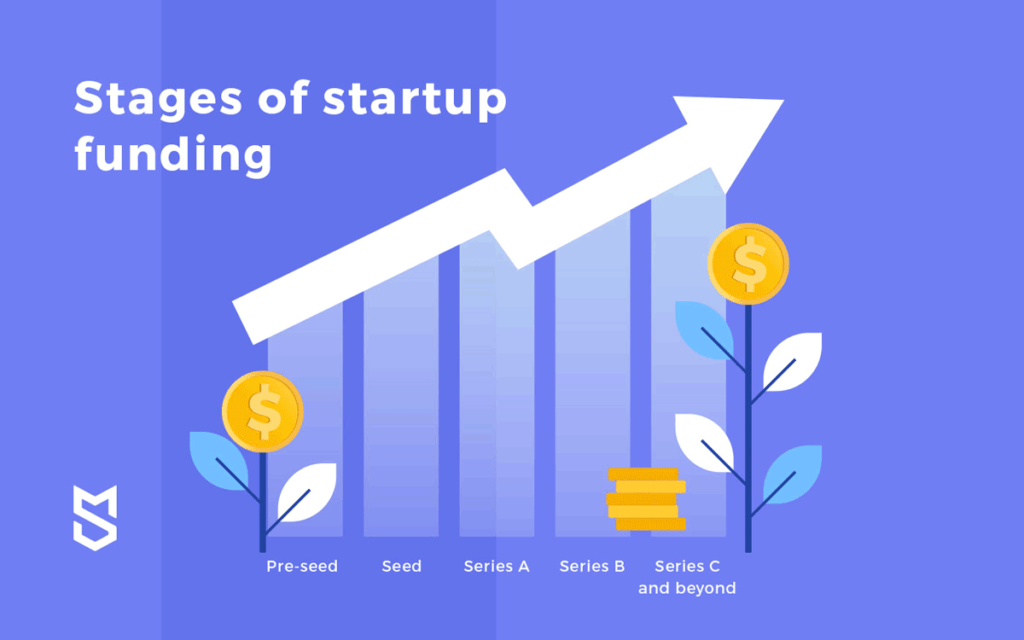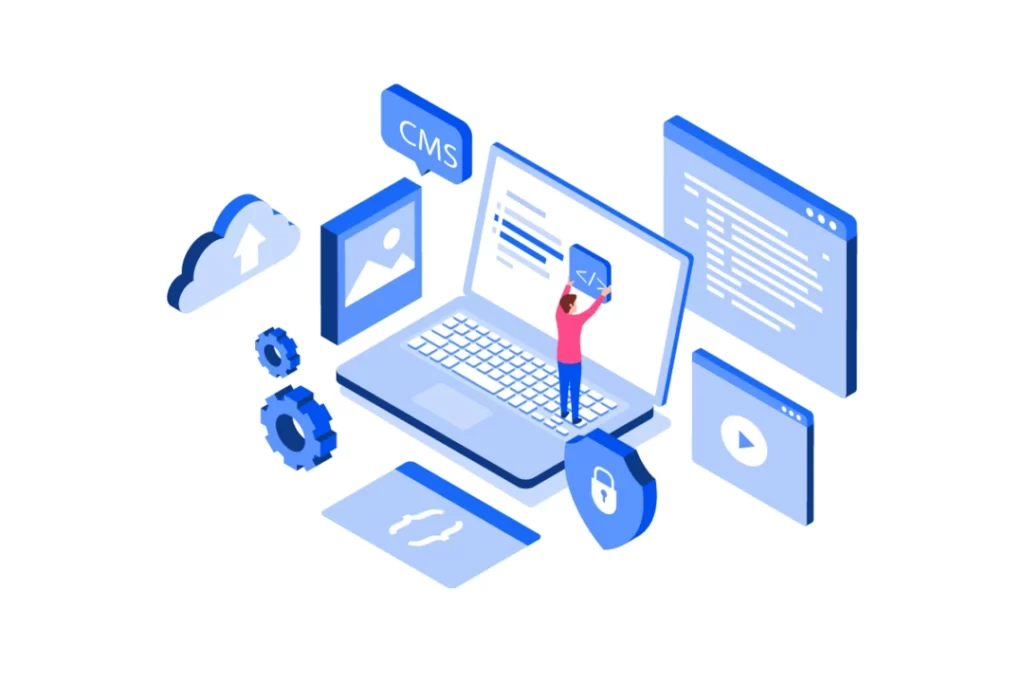How to Start Your Own Business: A Comprehensive Guide
Starting your own business is an exciting yet demanding journey that requires extensive preparation, commitment, and a well-defined roadmap. While filled with immense potential, leaping entrepreneurship comes with its fair share of risks and unknowns. Whether you're an ambitious founder ready to make your mark or someone looking to turn your passion project into a lucrative career, this comprehensive guide will provide the fundamental building blocks and critical considerations for getting your venture off the ground and setting it up for long-term prosperity.
The entrepreneurial path often begins with an inspired idea and a vision, but transforming that spark into a sustainable business requires thoughtful planning and research. This includes assessing the market landscape, evaluating startup costs and financing options, formulating a business model, and mapping out processes and operations. Once you have a strategic blueprint, you can take the vital steps of formally registering your company, securing licenses and permits, setting up your business banking and accounting and purchasing necessary insurance plans.
With the legalities and logistics in place, you can focus on launching and growing your company. Key activities include:
- Sourcing vendors and suppliers.
- Hiring staff.
- Establishing company culture.
- Implementing marketing campaigns.
- Overseeing daily objectives and finances.
- Adapting as challenges arise.
As your customer base expands over time, priorities will shift toward developing new products or services, improving systems and efficiency, and even expanding into new locations.
While an exciting prospect, starting a business necessitates immense dedication, persistence, and resilience. From long hours to overcoming roadblocks, entrepreneurship demands vision and mental toughness. However, you can defy the odds with proper preparation, strategic focus, financial diligence, and passion for your work. Use this guide to turn your inspiring business idea into a thriving and rewarding venture. With commitment and focus, your entrepreneurial dreams can become a prosperous reality.
Table of Contents
1: Finding Your Business Idea

Identifying Your Passion
Before diving headfirst into entrepreneurship, it's essential to pause and reflect deeply on your true passions, interests, and values. Rushing into business ownership without this self-reflection often leads to frustration and a lack of fulfilment. Take time to ask yourself thoughtful questions to uncover what motivates you.
- What activities, topics, or issues do I feel genuinely excited and engaged by? Make a list of the things that light you up, that you could talk about for hours, that you eagerly immerse yourself in during your free time. Getting clarity on your passions is an essential first step.
- What skills, talents, or areas of expertise have I cultivated over the years? Take an inventory of your natural strengths and developed abilities that energise you. These could explain the types of businesses you're best equipped to start and thrive in.
- Is there a particular problem or need that I feel passionate about addressing? Tuning into the pain points and challenges that stir something within you can lead to impactful business ideas. Your passion surrounding an issue gives you the fuel, inspiration, and purpose to persevere despite obstacles.
Reflecting on excitement, skills, and a sense of purpose can reveal the seeds of a fulfilling entrepreneurial path aligned with your most heartfelt interests and values. Don't just jump into a business because it seems lucrative or trendy. Build something around your passions. This focus and authenticity breed success and satisfaction.
Market Research
- Media, The Staff of Entrepreneur (Author)
- English (Publication Language)
- 876 Pages – 08/10/2021 (Publication Date) – Entrepreneur Press (Publisher)
After identifying your passion and arriving at a potential business concept, validating your idea through thoughtful market research is crucial. This process will help you understand if there is indeed a need or demand for your offering and allow you to shape your idea based on real-world insights.
- Studying your target market in-depth: Identify who your ideal customers would be. Look beyond basic demographics to understand their behaviours, preferences, needs, frustrations, and buying motivations. Profile different customer segments if appropriate. Gather insights through surveys, interviews, focus groups, and observing online conversations in your niche. Understand what value prospective customers are seeking so you can position your business to deliver it.
- Performing a competitive analysis: Research direct and indirect competitors in your space. Look beyond the prominent players and include alternatives your customers could turn to: Analyse product offerings, pricing, marketing messaging, brand personalities, and more. Identify competitors' strengths you may want to emulate, but also look for weaknesses you can improve upon. Aim to articulate how you will differentiate.
- Uncovering gaps, opportunities and entry points: Look for gaps where customer needs are unmet and opportunities exist for a new entrant. Identify emerging trends and changes in your industry that may open up new prospects. Talk to experts for their insights on where there is room for innovation and improvement. Your market research may uncover white space where you can create a new category altogether.
- Validating demand: You want to validate sufficient demand for your offering. This can be assessed through pre-sales testing, running crowdfunding campaigns, or gathering expressions of interest from prospective customers.
Thorough market research reduces assumptions by grounding your business idea in real customer and industry data. It also helps refine your concept, positioning, and go-to-market strategy based on a concrete understanding of your target market and the competitive landscape. This foundation sets you up for greater success as you embark on your entrepreneurial journey.
Validating Your Idea

Before fully diving into a new business idea, it is essential to validate the concept to determine if it has the potential to be successful. Creating a Minimum Viable Product (MVP) is a highly effective validation approach.
An MVP is a stripped-down, early version of a product or service that enables entrepreneurs to:
- Test the core concept with real potential customers. By putting a simplified MVP in front of target users, entrepreneurs can assess if there is demand and interest in the core idea. This early market testing provides empirical data on whether the concept solves a real customer problem. Rather than relying on assumptions, an MVP allows entrepreneurs to let the market speak.
- Gather valuable feedback and insights from early adopters. By presenting an MVP to early customers and collecting their responses, critiques, and suggestions, entrepreneurs gain precious real-world perspectives on evolving the product to meet customer needs better. This feedback loop enables entrepreneurs to identify flaws and opportunities for refinement.
- Iterate and incrementally improve the product. The learnings and perspectives gathered from MVP testing enable agile, iterative development. Entrepreneurs can rapidly utilise customer feedback to evolve the MVP, enhancing core features and capabilities. This iterative process allows entrepreneurs to build only what customers genuinely want cost-effectively.
By validating proposed business ideas through real-world testing with a Minimum Viable Product, entrepreneurs can develop customer-driven products, enhance market fit, and substantially reduce the risks associated with new ventures. The MVP approach saves months or years building the wrong product that the market doesn't want. Instead, MVPs allow entrepreneurs to fail and learn – or quickly validate that they are on the right track.
2: Creating a Business Plan

Executive Summary
The executive summary is the first and most crucial section of your business plan, acting as the front door that invites readers into the whole plan. In this critical section, provide a high-level overview of the key elements of your proposed business to garner interest and excitement.
- Begin with a brief description of your business that explains your core products or services. Share your business name and location and a short statement communicating your mission, values and objectives. This overview will orient readers to the purpose behind your company.
- Next, convey your unique selling proposition, or USP – what makes you stand out in the marketplace. Highlight your competitive edge, such as proprietary technology, niche expertise, excellent customer service, environmental sustainability, or other differentiators. Your USP explains why customers should buy from you instead of competitors.
- Share your long-term vision for where you want to take the company. Include your stretch goals that may take 3-5 years to accomplish, such as expanding to new markets, increasing revenue, or becoming an industry leader. This demonstrates that you have a strategic plan for growth and success.
The executive summary should distil the essence of your business concept into a compelling snapshot that excites readers to learn more. You can capture investors' interest and draw them into the plan by briefly showcasing your mission, competitive advantage, and future ambitions. The summary should be thorough yet concise – generally one page – to entice readers to explore the following details.
Market Analysis
A comprehensive market analysis is vital to any business strategy, as it equips you with invaluable insights into your industry, competitors, and target audience. To ensure that your market analysis is thorough and effective, here's an in-depth exploration of the critical elements you should include:
- Industry Trends and Growth Prospects: Begin by providing a comprehensive overview of your industry. Analyse its current status, including market size, major players, and recent developments. Delve into the trends that are currently shaping the industry and discuss how these trends are expected to evolve in the future. This forward-looking perspective is crucial for positioning your business to capitalise on emerging opportunities and navigate potential challenges.
- Competitor Analysis: To gain a competitive edge, it's essential to understand your rivals inside out. Identify your key competitors and go beyond mere listing by delving into their strengths, weaknesses, and unique selling points. Explore their product or service offerings, pricing strategies, distribution channels, and customer base. By assessing your competitors comprehensively, you'll be better equipped to devise strategies that set you apart and allow you to capture a larger market share.
- Strengths: Highlight what your competitors excel at, such as product quality, brand recognition, or market presence.
- Weaknesses: Identify areas where your competitors fall short, such as customer service, pricing, or product innovation.
- Market Share: Analyse the percentage of the market currently held by each competitor and consider how you can disrupt their dominance.
- Unique Selling Proposition (USP): Your USP is the cornerstone of your branding and marketing efforts. Clearly define what sets your business apart from the competition. Explain why customers should choose your products or services over your competitors. Is it your innovative technology, exceptional customer service, or a unique product feature? Your USP should resonate with your target audience and address their needs or pain points.
- Customer-Centric Approach: Highlight how your USP aligns with the desires and preferences of your target market. Emphasise the value it brings to customers' lives.
Incorporating these elements into your market analysis will provide a comprehensive understanding of your business environment and serve as a foundation for strategic decision-making. It empowers you to position your business effectively in the market, identify growth opportunities, and, ultimately, create a compelling narrative that resonates with your target audience. Remember, a well-informed market analysis is an ongoing process that should be revisited regularly to adapt to evolving market dynamics and ensure your business stays ahead of the competition.
Financial Projections
Creating a comprehensive financial plan is an indispensable element of your business strategy. Within this vital section, your financial plan should encompass the following crucial aspects, as they serve as the cornerstones of your financial success:
- Startup Costs: Calculating the initial investment required to kickstart your business is the first step in your financial journey. This entails a meticulous breakdown of all the expenses you'll incur before your business starts generating revenue. These may include costs for securing office space, purchasing equipment, obtaining permits, and hiring initial staff. By identifying and quantifying these expenses, you'll have a clear picture of the financial resources required to get your business off the ground.
- Revenue Forecasts: The next component of your financial plan involves making educated estimations about your income during the initial years of your business operation. Revenue forecasts provide insight into the expected financial performance of your business. It's essential to base these forecasts on market research, industry trends, and your unique value proposition. This step not only helps in setting realistic financial goals but also informs your overall business strategy.
- Expenses: Creating a comprehensive list of all foreseeable expenses is pivotal. This includes fixed costs (such as rent, utilities, insurance, and salaries) and variable costs (like marketing, raw materials, and maintenance). These expenses determine your cash flow, budget allocation, and profitability. By breaking down your costs into categories, you can make informed decisions about resource allocation and identify areas where cost-cutting measures may be necessary.
- Profitability Analysis: A core objective of your financial plan is to ascertain when your business is projected to become profitable. This involves thoroughly analysing your revenue and expenses, allowing you to pinpoint the break-even point and the timeline for achieving sustained profitability. This insight is invaluable for managing cash flow, securing funding if needed, and ensuring the long-term viability of your business.
In summary, crafting accurate financial projections is akin to charting a course for your business's financial health and longevity. These projections are a navigational tool, enabling you to make informed decisions, secure financing, and adapt your strategies as circumstances change. Dedicating time and effort to this crucial aspect of your business strategy increases your chances of achieving sustainable success and growth.
Marketing Strategy

Your marketing strategy is a comprehensive plan outlining how to promote your business, attract new customers, and retain existing ones. A strong strategy helps you connect effectively with your target audience and build a loyal customer base. Key elements to include in your marketing strategy are:
- Defining your target audience: Thoroughly research and analyse your ideal customer demographics, geographic location, behaviours, and needs. Create detailed buyer personas that represent your best customers. Identify where your different audience segments congregate online and offline. Clearly defining your target audience allows you to tailor content and choose marketing channels directly appealing to their preferences.
- Selecting marketing channels: Determine the optimal mix of marketing channels, such as social media platforms, SEO, email marketing, content marketing, print/TV/radio ads, trade shows, etc., that will effectively reach your audience. Outline the channels you will focus on, projected costs, and performance metrics for each.
- Building your brand: Develop a consistent brand identity and messaging that resonates with your audience. Convey your brand personality, voice, and values across all platforms—Foster brand loyalty by providing a cohesive user experience.
- Content marketing strategy: Produce targeted, high-quality content like blog posts, videos, and social media updates that engage your audience. Focus on educating and adding value instead of overt promotions. Leverage content to attract new visitors, convert leads, and retain customers.
- Sales strategy: Define your sales process, outlining how leads will move down the funnel from awareness to consideration, conversion, and loyal brand advocacy. Build an effective pricing strategy suited to your positioning and cost structure. Train sales staff on best practices.
Regularly measure the performance of your marketing efforts. Adapt plans when necessary to improve results over time. An integrated strategy connects you to customers, fuels business growth, and builds lasting competitive advantage.
3: Legal and Administrative Considerations

Business Structure
Selecting the appropriate legal structure for your business is a pivotal decision with significant implications for your liability, tax obligations, and ownership arrangement. It's crucial to weigh your options carefully, considering your business size, goals, and personal circumstances. Here are some standard legal structures to consider:
- Sole Proprietorship:
- Suitability: Ideal for solo entrepreneurs and small businesses.
- Liability: Offers no distinct legal separation between your personal and business assets, making you personally responsible for business debts and obligations.
- Taxation: Business income is typically reported on your tax return.
- Ownership: Sole proprietors have complete control over their business.
- Limited Liability Company (LLC):
- Suitability: Provides a balance of liability protection and flexibility, making it suitable for various business sizes.
- Liability: The main advantage is limited liability, which shields your assets from business debts.
- Taxation: LLCs offer flexibility in tax treatment, allowing you to choose between pass-through taxation, like a partnership or corporate taxation.
- Ownership: LLCs can have multiple members, and the percentage of membership interests determines ownership.
- Corporation:
- Suitability: Generally suitable for larger businesses or those planning to seek external investment.
- Liability: Provides the most robust liability protection, as personal assets are typically shielded from business liabilities.
- Taxation: Corporations face double taxation, with the company paying corporate taxes on profits and shareholders paying taxes on dividends received.
- Ownership: Shareholders own the corporation, and a board of directors manages.
Each of these legal structures has advantages and disadvantages, so it's crucial to consult a legal expert or business advisor who can provide personalised guidance based on your specific goals and circumstances. They can help you navigate the complexities of legal requirements and tax implications associated with each structure, ensuring you make an informed decision that best aligns with your business objectives. Remember that the right choice can lay a solid foundation for your business's success, while the wrong one can lead to unexpected challenges.
Permits and Licenses
- Mariotti, Steve (Author)
- English (Publication Language)
- 496 Pages – 04/29/2014 (Publication Date) – Crown Currency (Publisher)
A legal business requires strict adherence to a complex web of local, state, and federal regulations. Failure to comply with these legal mandates can result in costly fines and disruptive interruptions to your operations. To navigate this intricate terrain successfully, you must embark on a comprehensive journey that involves the following critical steps:
- Thorough Permit Research: The first step in your compliance journey is to meticulously research the specific permits and licenses that pertain to your business. The nature of these requirements can vary significantly depending on your geographical location and industry. Be prepared to invest time and effort into identifying the permits you need to operate legally. This often involves deciphering the legal jargon and bureaucracy associated with permits.
- Navigating the Application Process: Once you've identified the necessary permits and licenses, the next crucial step involves completing the requisite paperwork and fulfilling any associated fees. This can be daunting, as government forms often have complex language and meticulous requirements. Accuracy and attention to detail are paramount here, as errors or omissions can lead to delays or denials in your application process.
- Commitment to Renewal and Ongoing Compliance: Acquiring permits and licenses is not a one-time task but an ongoing commitment. You must ensure that your permits are renewed promptly and that your business complies with evolving regulatory changes. Failure to do so can have dire consequences, including legal penalties and potential business shutdowns. Keeping abreast of changing regulations can be time-consuming, but maintaining your business's legal standing is indispensable.
In summary, the road to legal compliance for your business is a multi-faceted journey that involves extensive research, meticulous paperwork, and ongoing diligence. Neglecting any of these steps can expose your business to the risk of financial penalties and operational disruptions. Therefore, you must invest time and resources to stay informed and compliant with local, state, and federal regulations. This commitment to legal compliance safeguards your business and reinforces its reputation as a responsible and law-abiding entity.
Intellectual Property

Safeguarding your intellectual property (IP) is paramount, primarily if your business heavily depends on distinctive ideas, branding, or inventions. In this competitive landscape, protecting your creative assets is not merely a legal requirement but also a strategic imperative. To delve deeper into this subject, let's explore the key considerations in protecting your intellectual property:
1 – Trademarks: Registering your business name, logo, and unique symbols or phrases as trademarks is essential. Trademarks grant you exclusive rights to use these elements in connection with your products or services. This exclusivity helps prevent others from using similar branding elements that could confuse consumers.
- Business Name: Your business name is vital to your brand identity. Registering it as a trademark ensures that no one else can operate under a similar name in your industry, safeguarding your brand's reputation.
- Logo and Symbols: Logos and unique symbols often serve as visual representations of your brand. By registering them as trademarks, you not only protect your brand's visual identity but also create a solid visual association in the minds of consumers.
- Unique Phrases: Catchphrases or slogans can be powerful branding tools. Trademarking these phrases prevents others from capitalising on your marketing efforts and messaging.
2 – Patents: Securing patents should be a top priority if your business has developed groundbreaking innovations or technologies. Patents grant you exclusive rights to use, make, sell, or license your invention for a specified period. This protection ensures that your competitors can't replicate your innovations and allows you to monetise them through licensing agreements.
- Innovations: Whether it's a revolutionary product, a unique manufacturing process, or a novel software algorithm, patent protection keeps your creations safe from unauthorised use.
- Technology: In today's digital age, technology-driven businesses must safeguard their intellectual property to maintain a competitive edge. Patents provide the legal framework to protect your technological advancements.
3 – Copyrights: Creative works, such as content, literature, and artwork, are the lifeblood of many businesses. Copyright protection is essential for preserving the integrity of your creative assets and preventing unauthorised reproduction or distribution.
- Content: If your business relies on written content, graphics, videos, or music, copyright registration ensures that others can't copy or distribute your work without permission.
- Literature: Authors, publishers, and content creators can protect their books, articles, and written materials through copyright. This protection extends to the exclusive rights to reproduce, distribute, and adapt the work.
- Artwork: Visual artists, designers, and illustrators can safeguard their artwork from being used without consent. Copyrights ensure that your creations remain under your control.
In conclusion, intellectual property protection is a robust shield for your brand and innovations, shielding them from potential infringement. By strategically utilising trademarks, patents, and copyrights, you secure your creative assets and pave the way for sustainable growth and competitive advantage in today's business landscape. Proactive IP protection invests in your business's long-term success and sustainability.
4: Funding Your Business

Bootstrapping
Bootstrapping, a strategic approach to financing your business, involves relying on your savings and reinvesting the profits generated by your venture. This method can be highly viable, especially when external financing options are limited. Let's delve deeper into the fundamental principles and strategies for effective bootstrapping:
1 – Develop a Lean Business Model: Creating a lean business model is the cornerstone of successful bootstrapping. This entails a relentless focus on keeping expenses as low as possible while directing your efforts towards revenue generation. By adopting this approach, you conserve resources and build a solid foundation for sustainable growth.
- Expense Minimisation: Scrutinise your business operations to identify areas where costs can be trimmed without compromising quality. This might involve negotiating better deals with suppliers, utilising cost-effective technology solutions, or implementing efficient processes to streamline operations.
- Revenue Generation: Shift your primary focus towards generating revenue from the earliest stages of your business. Identify your target market, refine your value proposition, and employ effective marketing and sales strategies to attract and retain customers.
2 – Prioritise Profitability: Bootstrapping thrives on profitability. Instead of distributing profits to shareholders or partners, reinvest them into your business to fuel its growth and expansion. This approach allows you to accelerate your venture's development without relying on external funding sources.
- Profit Reinvestment: Allocate a significant portion of your profits towards areas that will contribute to the long-term success of your business. This could include product development, marketing campaigns, hiring key personnel, or expanding into new markets.
- Financial Prudence: Maintain a keen eye on your financial statements. Regularly review your income, expenses, and profit margins to ensure that you are maximising profitability. Consider setting specific financial goals and performance metrics to track your progress.
3 – Seek Alternative Funding Sources: While bootstrapping primarily relies on personal savings and profits, exploring alternative funding sources can provide additional support and flexibility to your business.
- Crowdfunding: Investigate crowdfunding platforms that align with your business type and objectives. Crowdfunding campaigns can generate funds and help validate your product or service.
- Grants and Awards: Research grant opportunities and business competitions that offer financial awards to startups and small businesses. Winning such grants can provide a significant boost to your capital.
Bootstrapping offers the advantage of maintaining complete control over your business, which can be especially valuable if you have a clear vision and are passionate about your venture. However, it demands meticulous financial management and a relentless commitment to maximising profitability. By adhering to the above principles and continuously refining your bootstrapping strategy, you can pave the way for sustainable growth and long-term success for your business.
Seeking Investors
- Hardcover Book
- Ries, Eric (Author)
- English (Publication Language)
- 336 Pages – 09/13/2011 (Publication Date) – Crown Currency (Publisher)
Pursuing investors can be strategic if your business needs significant capital infusion or aims to expedite its growth trajectory. To embark on this path effectively, consider the following steps:
- Craft a Compelling Pitch: Your first step is to create a pitch that resonates with potential investors. This pitch should eloquently convey your business concept, outline the market opportunity you're addressing, and provide realistic financial projections. A compelling pitch piques investors' interest and gives them confidence in your venture's viability.
- Identify the Right Investors: Finding the right investors is crucial. Look for individuals or organisations that share a genuine interest in your industry and align with your company's values. Beyond just financial backing, these investors should bring industry expertise and connections. This synergy can be invaluable in propelling your business forward.
- Prepare for Negotiations: Before engaging with investors, arm yourself with a solid understanding of the negotiation process. Expect discussions about equity stakes, ownership structure, and the level of involvement investors will have in your business. Be ready to negotiate terms that secure the funding you need and maintain a healthy balance of control and ownership.
Investors can offer more than just capital. They can provide invaluable insights, mentorship, and networking opportunities. Therefore, the investor-founder relationship should be considered a strategic partnership for mutual growth and success. By following these steps, you can increase your chances of attracting the right investors and setting your business on a path to success.
Loans and Grants

Securing financing through small business loans and grants is crucial for entrepreneurs looking to fuel their ventures. It's essential to follow a structured approach to navigate this process effectively. Here are the key measures to secure funding:
1. Researching Loan and Grant Programs:
- Government Grants: Start your search by exploring government grant programs. These grants are often designed to support specific industries or initiatives. Government grants can be found in the UK through various agencies such as Innovate UK, the Department for Business, Energy & Industrial Strategy (BEIS), and regional bodies.
- Private Sector Loans: The private sector offers many loan options for small businesses. Banks, credit unions, and online lenders provide various financing solutions tailored to different needs. Research the terms, interest rates, and repayment options these institutions offer.
- Local Initiatives: Pay attention to local resources and initiatives. Many regions and cities offer grants or low-interest loans to promote economic growth and job creation. Contact your local business development agencies or chambers of commerce to explore these opportunities.
2. Preparing a Solid Application:
- Business Plan: Craft a comprehensive business plan that outlines your business's mission, vision, and objectives. Detail your products or services, target market, competitive analysis, and marketing strategy. Include a clear financial plan that projects income, expenses, and cash flow for the foreseeable future.
- Financial Projections: Alongside your business plan, provide detailed financial projections. These should include profit and loss statements, balance sheets, and cash flow forecasts. Transparent financial data demonstrates your business's viability and repayment capacity.
- Supporting Documentation: Depending on the specific program, you may need to submit additional documentation, such as tax returns, personal financial statements, or legal agreements. Ensure all required paperwork is complete and organised.
3. Meeting Eligibility Requirements:
- Thoroughly Review Eligibility Criteria: Each loan and grant program has unique eligibility requirements. Carefully read through the guidelines provided by the funding source. Ensure that your business aligns with the program's objectives and target industries.
- Address Any Deficiencies: If your business doesn't meet specific criteria, address deficiencies. This may involve improving your credit score, increasing collateral, or refining your business plan to align with the program's goals.
- Seek Expert Advice: If you need more clarification on eligibility or application requirements, consider consulting with a financial advisor or business consultant. They can provide guidance and help you navigate the complexities of securing funding.
In conclusion, small business loans and grants are valuable resources for entrepreneurs seeking financial support. By conducting thorough research, preparing a compelling application, and ensuring eligibility, you increase your chances of securing the funding that best suits your business needs. Remember that the landscape of funding options is diverse, so take the time to find the right fit for your specific circumstances.
5: Building Your Brand and Online Presence

Branding and Logo Design
Developing a solid brand identity is critical for businesses looking to stand out and build lasting customer relationships. Your brand identity encompasses everything about how your customers perceive and interact with your company. Investing in professional branding and logo design is essential to shaping positive brand associations.
- Hiring a professional designer: Work with an experienced graphic designer or agency to create a unique and memorable visual identity. A professional can help develop an identifiable logo, colour palette, fonts, and other branding elements that align with your business mission and values. This cohesive branding reinforces your desired brand image across all customer touchpoints. The upfront investment is well worth it to build familiarity and trust in the marketplace.
- Consistency: Be meticulously consistent in applying your branding. Use the same logo, colours, voice, messaging, etc. across your website, packaging, marketing materials, signage, uniforms, and more. Consistent branding boosts recognition and helps customers instantly identify your business. It also builds trust by communicating professionalism and reliability. Don't diminish your brand identity by using disjointed visuals, messaging, or experiences.
An intentional, well-executed brand identity forms emotional connections with customers and makes your business stand out. Distinctive branding strategies separate you from competitors and lend credibility. Customers who feel good about your brand are likelier to purchase from you and promote you to others. A professional designer can help nurture these valuable relationships through strategic brand identity development.
Website Development

In today's digital age, where customers increasingly go online for information, products, and services, having a user-friendly and responsive website is essential for any business. Here are some critical steps to approach building an effective business website in 2023:
- Choose a reliable web developer: Hire an experienced web developer or digital agency specialising in building websites for your industry. Look at their portfolio of past work and client testimonials. Ensure they are up-to-date on web design trends, technologies, and best practices.
- Mobile optimisation: With more than 60% of web traffic now coming from mobile devices, making your website responsive and mobile-friendly is crucial. The site layout and elements should adapt seamlessly to smaller screens. All functionality should work smoothly on smartphones and tablets.
- Search Engine Optimisation (SEO): Employ SEO best practices throughout the website development. This includes keyword research, metadata optimisation, site architecture, page load speed improvements, etc. An SEO-optimised site will rank higher in search engines like Google for relevant queries, driving more organic traffic.
- Compelling content: Engage visitors by regularly publishing fresh, high-quality content that aligns with your brand. The content should address your ideal customer's needs or interests.
- Easy navigation: Allows visitors to find information with intuitive site navigation and architecture quickly. Important pages should be accessible through site-wide headers and footers.
- Forms and calls-to-action: Include lead generation forms, email sign-ups, interactive features, and clear calls-to-action to convert visitors into leads and customers.
With a well-designed, mobile-friendly website optimised for search and conversion, you can make a great first impression online, engage customers, and grow your business in 2023 and beyond. Your website serves as the hub for your digital presence and brand.
Social Media and Digital Marketing

An effective digital marketing strategy is vital for businesses and organisations to reach and engage with their target audience. With so much competition online, implementing a thoughtful and strategic approach to digital marketing is vital to standing out and achieving your goals.
There are a few critical steps to building a successful digital marketing strategy:
- Develop a social media strategy: One of the most essential components of digital marketing is leveraging social media platforms. You'll want to determine which social platforms make the most sense for your brand and goals based on where your target audience is most active. For example, if you're a B2B company, you should focus more on LinkedIn than Facebook. Or, if you're a consumer brand aiming to reach millennials, investing in engaging content on Instagram and TikTok could be effective. Research which platforms your audience uses, and develop content and engagement strategies tailored to each.
- Content creation: Creating valuable, relevant, and shareable content is crucial for establishing your brand's online presence and authority. Content like blog posts, videos, infographics, and more provide value for your audience while positioning your brand as a thought leader. Develop a content calendar and marketing assets that align with your brand voice and resonate with your target customer personas. Optimisation for search is also crucial – do keyword research to understand what your audience is searching for.
- Paid advertising: While organic content is essential for long-term branding, paid advertising lets you reach a much wider audience and attract new visitors more quickly. Platforms like Google Ads, Facebook ads, LinkedIn ads, and more allow you to target your spending to reach your ideal customers. Start by setting campaign goals and target CPMs/ROAS, and continuously optimise your ads through A/B testing and tracking performance data.
Implementing a strategic approach across these digital marketing channels will help your business connect with customers, generate more qualified leads, and drive sales and revenue. With thoughtful planning and execution, your digital marketing efforts will enable you to cut through the noise and effectively engage your target audience online. Measure results regularly and adapt your strategies as needed to maximise your return on investment. With the right digital marketing plan, you can build brand awareness, traffic, and conversion rates over time.
6: Launching and Scaling

Launch Strategy
Launching a new business is a pivotal moment that sets the stage for future growth and prosperity. A strong launch creates buzz, attains new customers, and establishes your brand's tone and reputation. Follow these steps for a memorable and effective launch:
- Plan an exciting kickoff event or marketing campaign to generate interest leading to opening day. Consider hosting an invite-only preview night, giving away promotional merchandise, or running social media contests. Spread word-of-mouth excitement and get people talking about your company's arrival.
- On launch day, make a splash with attention-grabbing stunts and activations. Have the mayor cut a ribbon at your storefront, provide giveaways to early customers, or hand out branded cupcakes and balloons. First impressions are critical, so ensure the experience is lively and fun and reflects your brand identity.
- Closely monitor feedback from your initial customers. Gather insights through surveys, conversations, and reviews to understand what resonates and any areas for improvement. Based on this input, be responsive to suggestions and fine-tune your product, service, and marketing aspects.
- Refine and iterate continually over the first few weeks and months. Use customer data to tweak your offerings, pricing, promotions, etc. Launching is not a one-time event but rather the first step in an ongoing process of optimisation and improvement.
A dynamic, memorable launch generates buzz and sets you up for success. With careful planning, consistent monitoring of results, and commitment to ongoing evolution, your new business can gain momentum and establish roots during the critical launch period.
Scaling Your Operations
- Audible Audiobook
- Tom Eisenmann (Author) – Robert Fass (Narrator)
- English (Publication Language)
- 03/30/2021 (Publication Date) – Random House Audio (Publisher)
Scaling a business to meet increased demand requires careful planning and execution. Rather than jumping into expansion, thoroughly evaluate growth opportunities and prepare your operations.
- Evaluate growth opportunities: Keep a close eye on market trends, consumer demand, and opportunities in your industry. Look for signs that demand for your product or service is increasing. Analyse sales data, website traffic, customer inquiries, and other metrics to quantify growth potential. Consider conducting surveys or focus groups to assess customer interest in expanded offerings. Evaluate your competitors' growth strategies as well. Choose target markets wisely by identifying segments that align with your brand and offer room for expansion.
- Invest in the right resources: Expanding operations requires investment in resources – staff, equipment, facilities, and possibly funding. Carefully assess your capacity constraints and needs. Hire a talented team or train existing employees to take on new roles. Acquire equipment and technology to boost production capacity and efficiency. Secure funding if needed to finance growth plans. Bring on partners or contractors if beneficial. Ensure you have the physical space and infrastructure to support expansion.
- Maintain quality standards: As you grow, keep quality from slipping. Keep a close eye on all customer touchpoints to ensure satisfaction remains high. Empower staff to uphold standards and continually improve processes. Monitor key performance indicators around quality—Automate processes where possible for consistency. Listen to customer feedback and optimise accordingly. Staying disciplined around quality will enable sustainable, successful growth.
With careful planning, strategic investment, and consistent execution, companies can scale up efficiently. Expansion brings significant opportunities but also risks if not managed proactively. Businesses can scale up smartly by thoroughly evaluating options, dedicating resources, and keeping quality standards high.
Hiring and Team Building

Growing a business often requires bringing on additional team members. As you look to add staff, keep these tips in mind:
- Hire qualified employees: Seeking out candidates with the right skills and experience for open roles is crucial. Take time to thoroughly vet applicants to ensure they have the qualifications and expertise to excel in their positions. Conduct thoughtful interviews and check references to confirm they are a good fit.
- Foster a positive company culture: Culture matters. Nurture an environment where employees feel engaged, valued and motivated. Promote open communication, collaboration and inclusion. Set clear expectations while also allowing flexibility. Recognise achievements and celebrate wins together. A robust and supportive culture will help attract and retain top talent.
- Provide growth opportunities: Invest in your people through ongoing training, development and advancement opportunities. Support professional growth by providing coaching and mentoring. Offer to pay for relevant courses or conferences of interest. Promote from within when possible. Employees who see a path forward are more likely to stick around long-term.
Making the effort to assemble a skilled, motivated team creates a solid foundation as you scale your business. With the right people and priorities in place, you'll be better positioned to work toward your goals and take the company to the next level. Leverage your expanding team while fostering a positive culture and encouraging growth. The investment in human capital will pay dividends as your business evolves.
How to Start Your Own Business FAQs
How much capital do I need to start a business?
The capital required to start a business varies widely depending on your industry, location, and business model. Conduct a detailed financial analysis to determine your specific funding needs. Consider expenses like equipment, marketing, permits, and initial inventory. Having a financial cushion for unforeseen costs during the early stages is also wise.
Do I need a formal business plan?
While a formal business plan is optional, it's highly recommended. A well-structured business plan serves as a roadmap for your business, helps you secure financing, and clarifies your goals and strategies. Even if you don't need it to secure external funding, a business plan is valuable for guiding your entrepreneurial journey.
What's the best legal structure for my business?
The choice of legal structure depends on several factors, including your business's size, industry, and long-term goals. Here's a brief overview:
1 – Sole Proprietorship: Simple and inexpensive but offers no liability protection.
2 – Limited Liability Company (LLC): Combines personal liability protection with flexibility.
3 – Corporation: Provides maximum liability protection but involves more complex formalities.
Consult with a legal expert or business advisor to determine the most suitable structure for your situation.
How can I market my business on a limited budget?
Marketing on a limited budget is a common challenge for startups. Here are some cost-effective strategies:
1 – Content marketing: Create valuable blog posts, videos, or infographics showcasing expertise.
2 – Social media marketing: Engage with your audience on platforms like Facebook, Instagram, and LinkedIn.
3 – Networking: Attend industry events and build relationships with potential customers and partners.
4 – Email marketing: Build an email list and send regular newsletters with valuable content and promotions.
These strategies can help you reach your target audience without breaking the bank.
When should I consider scaling my business?
Scaling your business should be a strategic decision based on several factors:
1 – Proven demand: Ensure that there's consistent demand for your product or service.
2 – Available resources: Assess whether you have the capital, personnel, and infrastructure for expansion.
3 – Quality assurance: Make sure your existing operations run smoothly before scaling to avoid compromising quality.
Scaling too quickly can strain your resources, so balancing growth and maintaining your core operations is essential.
Conclusion
Launching your own business is a gratifying yet demanding undertaking. While being your boss and bringing your vision to life is thrilling, it also involves considerable risk, hard work, and learning from mistakes. However, with the proper preparation and persistence, your entrepreneurial aspirations can become a prosperous reality.
This guide has outlined several key steps to equip you for the challenges of starting a business. First, thoroughly research your industry, competitors, and target market to ensure there is demand for your offering. Create a detailed business plan mapping out your strategy and financial projections. Seek mentorship and advice from experienced entrepreneurs who have been in your shoes. Secure necessary financing and legally establish your business entity.
Once operational, remain adaptable and keep costs low initially. Provide an exceptional product or service, market aggressively, and prioritise customer satisfaction. Analyse sales data, industry trends, and economic factors to refine your approach constantly. Embrace both successes and failures as learning opportunities. Surround yourself with a skilled, trustworthy team to supplement your abilities.
While launching a business is demanding, the personal and financial rewards make the effort worthwhile. With passion, preparation, work ethic, and perseverance, you can overcome obstacles and enjoy the fruits of entrepreneurship. This guide provides the blueprint to turn your inspiring vision into a thriving enterprise. The journey ahead will push you to grow in resilience and wisdom. Take the first step today – your dreams are waiting to become a reality. Wishing you the best of luck!
Last update on 2024-05-11 / Affiliate links / Images from Amazon Product Advertising API






Nicely explained with detailed insights. Quite helpful… thanks a lot.
this is one of the best guides I have read. It is a blue print. thanks a million.
This is essential information for every new business.
Absolutely insightful!
Fairly applicable to existing business as well.
This is what is needed mostly it will be of on practical training
Brief yet so powerful.
This is a masterpiece, I really appreciate it!
Quite comprehensive and easy to understand. Thank you!